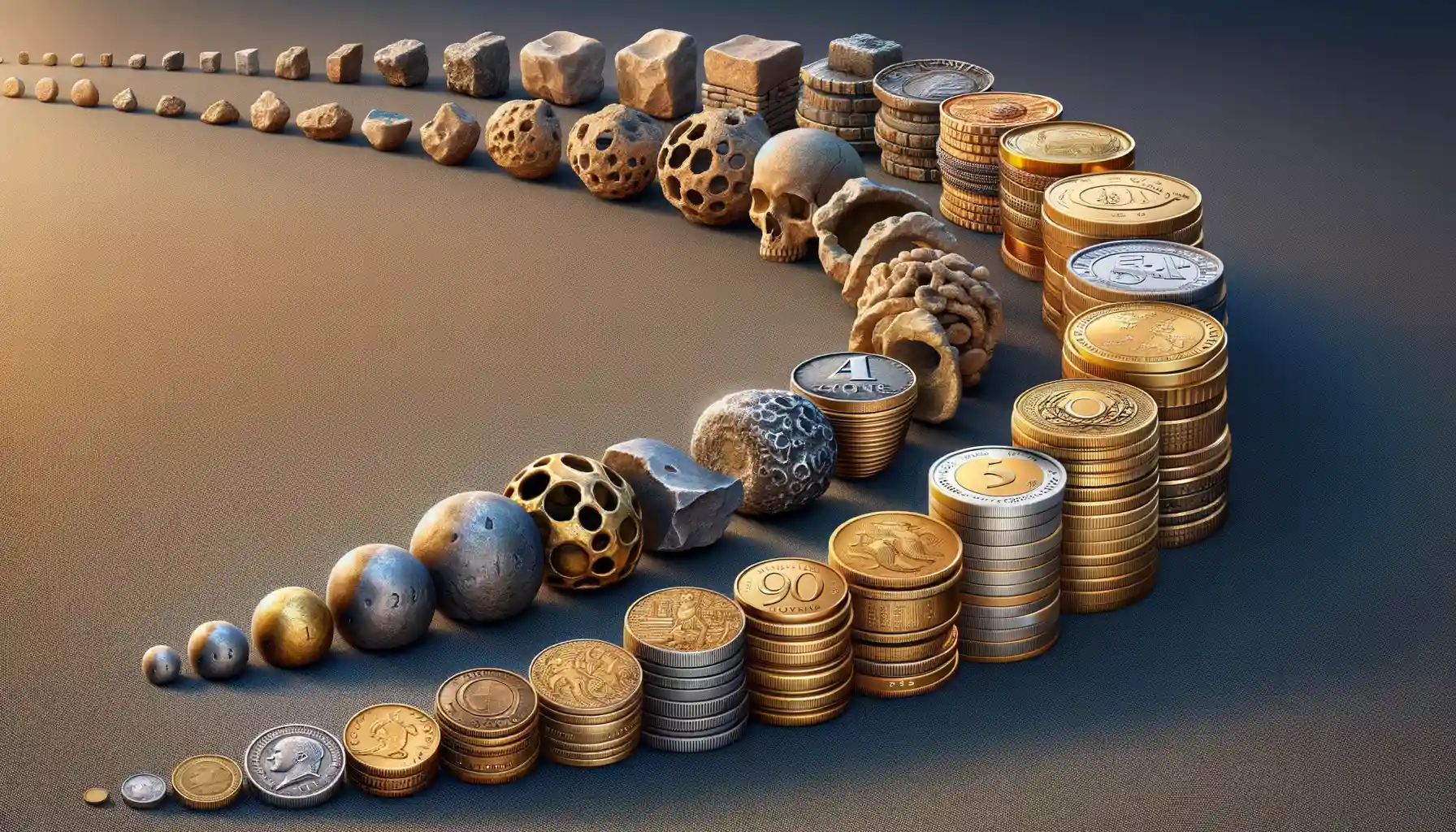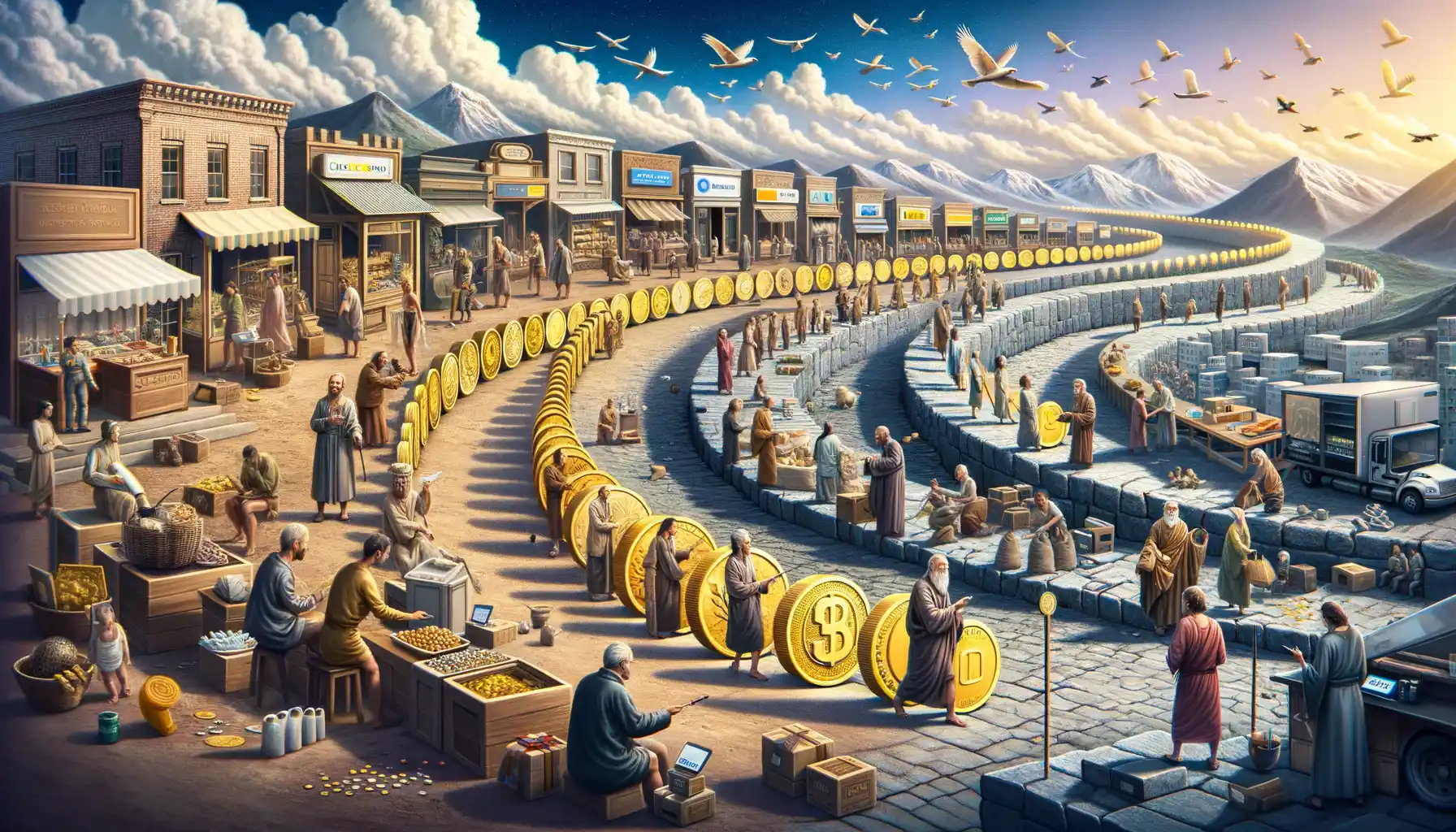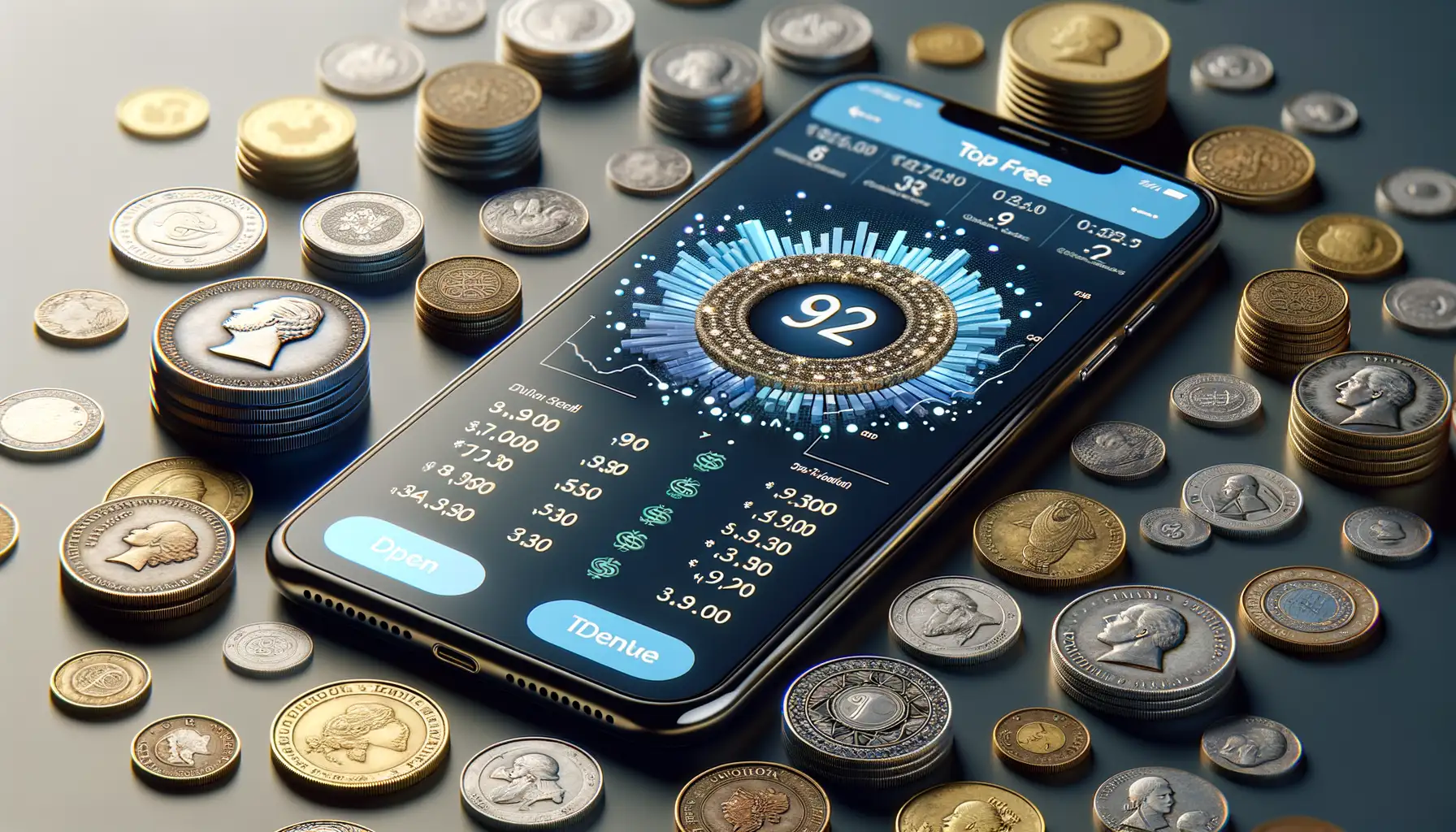The Origins of Currency and Barter Systems
Before Coins and Bills: A World of Barter
Imagine standing in a bustling ancient market. You hold a basket of apples, eager to trade them for a woolen scarf to survive the chill of an approaching winter. This was life before money—a world where value was subjective, and everything depended on what neighbors or strangers deemed your goods worth. In that barter economy, one question constantly loomed: how do you trade fairly when one person wants fish, and the other has only pottery?
It was a system filled with complications:
- No standard of value: A chicken might be worth two loaves of bread one day, but three the next.
- Double coincidence of wants: You needed to find someone who not only wanted your apples but also had the scarf you craved.
The Spark That Changed Everything
Enter the concept of currency, humanity’s ingenious way of sidestepping barter’s messy exchanges. Early societies began relying on objects—cowrie shells, beads, even large stones—that were widely valued, durable, and portable. These humble items carried weight beyond their physical form—they represented trust. Imagine holding a polished shell, knowing it symbolized not just wealth but also the dawn of economic progress.
The Rise and Development of Coinage

The Spark That Started It All
Picture this: you’re living thousands of years ago, bartering with your neighbor. You offer grain; they offer livestock. But what if your neighbor doesn’t need grain? Frustrating, right? Enter coinage—the ultimate game-changer. Around 600 BCE, in the kingdom of Lydia (modern-day Turkey), the first coins made of a gold and silver alloy called electrum gleamed their way into society. These weren’t just shiny lumps of metal; they were revolutionary tools, stamped with symbols like lions and bulls to signify value and trust.
These early coins were portable power. They traveled in traders’ pouches, crossing borders, fueling commerce, and even sparking the rise of empires. Suddenly, people could trade not just locally but across civilizations. Imagine buying spices from India or silk from China—all made easier by these tiny, clinking marvels.
Why Coins Took Over the World
So, why did coins capture humanity’s imagination? The answer is as practical as it is fascinating:
- Durability: Unlike early paper notes, coins didn’t tear or fade. They endured wars, storms, and centuries of wear.
- Precise Value: Each coin had a set worth—no more haggling over how many fish equal a goat.
- Trust: Rulers stamped their faces and symbols on coins, turning them into powerful promises of authenticity.
Over time, different regions began crafting their own unique currencies. Ancient Greece minted silver tetradrachms adorned with Athena’s owl, while Rome gave us the iconic golden aureus. These weren’t just money; they were storytelling pieces that symbolized culture, power, and identity.
The Emergence of Paper Money and Banking Systems

From Handwritten Notes to Trustworthy Bills
Imagine a bustling marketplace centuries ago. A merchant trades his silk for a pile of heavy silver coins, each jingling with promise but weighing him down on the long journey home. Enter the genius invention of paper money, a solution light as air yet monumental in its impact. Originating in Tang Dynasty China, these early paper bills were not just convenient—they were a revelation.
Governments began issuing notes backed by precious metals. Think of them as IOUs, but ones that changed the world. Instead of lugging around bags of coins, you held power in parchment. It was trust, compacted into ink and fibers. But with great innovation came great complexity, paving the way for banking systems.
The Rise of Banks: Gatekeepers of Wealth
Banks emerged as more than vaults; they were architects of financial systems. Here’s how they shaped everyday life:
- Depositing money ensured safety in uncertain times.
- Loans transformed dreams into reality—be it starting a business or rebuilding after a storm.
- Banknotes issued by institutions replaced regional currencies, creating unity across borders.
The modern banking world owes its roots to these breakthroughs, where trust and innovation collided to redefine wealth forever.
The Transition to Digital Payments in the Modern Era

The Convenience Revolution: Cashless Living Today
Picture this: you’re at a bustling coffee shop, your latte steaming in front of you. No fumbling for coins, no awkward shuffle through bills—you just tap your phone, hear the familiar *ping*, and voilà, transaction done. This seamless exchange is what makes digital payments feel nothing short of magic.
Gone are the days when wallets had to bulge with paper money or jangling coins. Now, with platforms like PayPal, Venmo, and Apple Pay, your bank exists in your back pocket, quietly working to make your day smoother and stress-free. But how did we get here?
Why Digital Payments Took Over
It’s not just about convenience: digital payments bring flexibility, speed, and an added sense of security to the table. Think about it—when was the last time you worried about exact change or misplaced cash? Probably not since mobile wallets entered the scene.
Consider these reasons why we’re embracing digital over physical currency:
- Fast Transactions: Whether you’re shopping online or splitting dinner with friends, payments happen in seconds.
- Global Reach: Traveling abroad? Forget foreign currency exchanges—your card or app has you covered.
- Eco-Friendly: Less paper waste means less strain on the planet—it’s money going green!
And let’s not ignore the emotional factor. The gentle buzz of your smartwatch after a purchase? It feels futuristic, efficient—even empowering. Digital payments don’t just simplify; they elevate experiences, turning once-clunky interactions into moments of effortless flow.
Future Trends in Payments and the Role of Technology

Breaking Ground: The Payment Revolution Ahead
The future of payments isn’t just knocking; it’s kicking the door wide open. Imagine a world where your morning coffee is paid for without lifting a finger—literally! Thanks to innovations like biometric scanning, payments could soon rely on just the unique pattern of your iris or the rhythm of your heartbeat. Forget rummaging through wallets or hunting down card readers. Payments are poised to become almost invisible, woven seamlessly into our daily lives.
It’s not just about convenience—it’s about possibilities. Picture this: you’re traveling abroad, and instead of swapping currencies or worrying about exchange rates, your digital wallet uses blockchain technology to automatically handle secure, instant transactions in local formats.
- Wearable tech: Your smartwatch may soon double as your payment method.
- Internet of Things (IoT): Your fridge might reorder groceries AND pay for them before you even notice they’re gone.
How Artificial Intelligence is Shaping the Way Forward
AI will play maestro in this symphony of innovation. Picture AI-powered payment systems that learn from your habits, suggesting smarter ways to save or offering tailored rewards as you shop. Whether it’s detecting fraud faster than any human ever could or powering hyper-localized offers in real-time, machine learning is taking payments from reactive to proactive.
Think of this: you walk into a store, no checkout lines in sight. Items simply register as “bought” when added to your basket, updated by AI-driven sensors. No scanning, no fuss—just pure magic.


